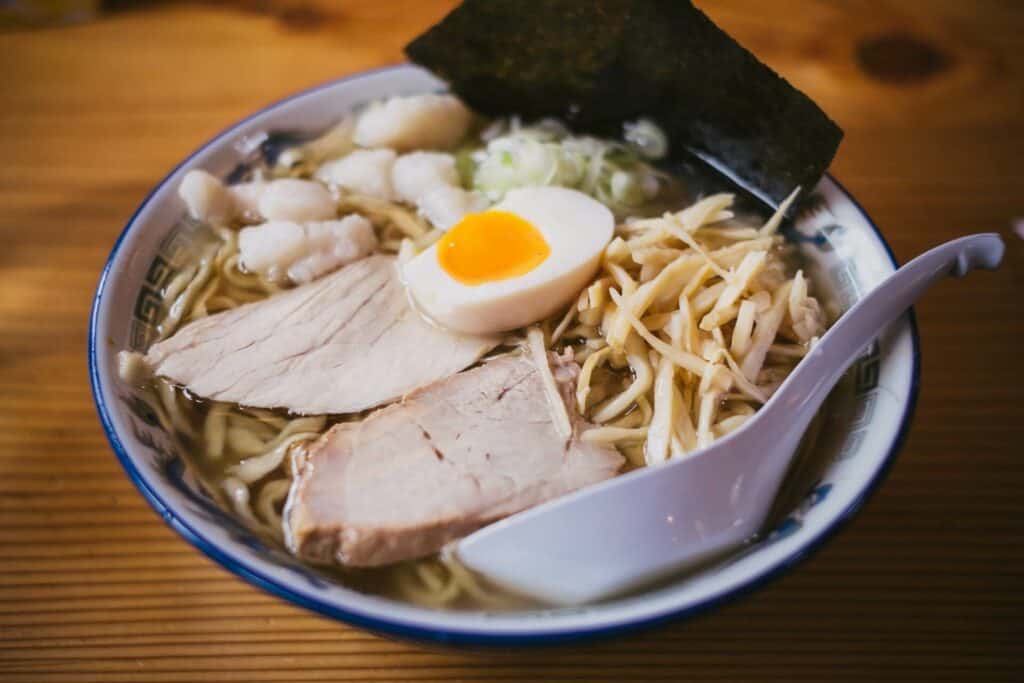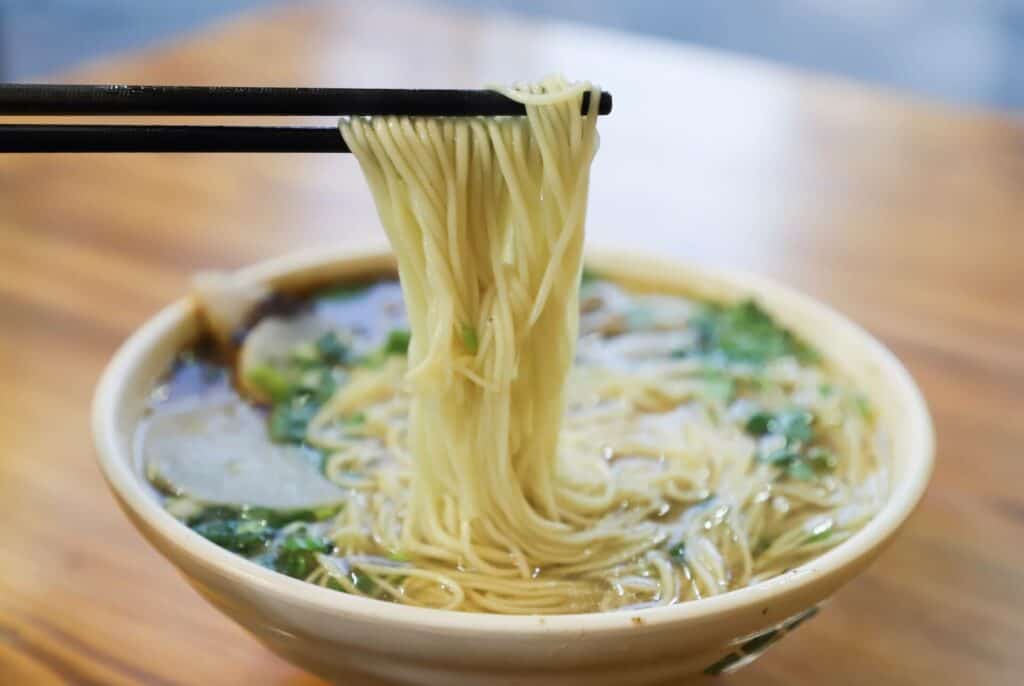Trying out some delicacies for the very first time may often raise important questions. For example, how many calories in a ramen bowl actually are there? Should you be concerned if you like to enjoy having a ramen bowl more than once a week? Let’s check out if there is anything to worry about.
A standard ramen bowl has anywhere from 450 to 600 calories. Of course, everything depends on the type of ramen you’re tasting because different ingredients have different nutritional values. That being said, while ramen is not considered unhealthy, it lacks some important nutrients you should eat daily.


Find out everything about the nutritional values of a ramen bowl and enjoy this delicacy without worrying about health.
How Many Calories Are There in a Ramen Bowl?
Most ramen bowls served in Japanese restaurants have between 450 and 600 calories. But only if you finish all the soup. However, if you don’t drink the entire thing, the total calories range from 400 to 550 (saving more than 50 calories). So, when you decide to eat ramen in a restaurant or want to make top ramen, you should be aware of its nutritional value.
Even if you’re a great Naruto fan and want to try the ramen Naruto eats, it doesn’t mean you shouldn’t know what you’re eating and whether it’s good for your health. That’s why we’ll check all the calories and nutritional values of the ramen bowl. What are the ramen seasoning, noodles, soup, and other ingredients? Also, check if ramen is made of dairy.
Check some of the most popular ramen styles offered in Japanese restaurants.
| Ramen type | Calories |
| Miso ramen | 580 |
| Tonkotsu ramen | 500 |
| Shoyu ramen | 470 |
Calories Count for Regular Ramen Bowl
If you’re new at tasting ramen, the important thing to remember is that it comes in a wide variety, and every bowl is unique. This means the number of calories in ramen can vary greatly depending on the type. For example, when it comes to soup, light, clear soups like shio have fewer calories than rich soups like tonkotsu and miso.
Naturally, a soup made with pork bones will be heavier and more caloric than one made with chicken bones and vegetables. In the table below, you can actually see a significant difference.
| Heavy grade | Soup calories | Noodles calories | Toppings calories | Total calories | |
| Jiro Style Ramen | Heavier | 800 | 600 | 200 | 1,600 |
| Shio (Salt-Seasoned) Ramen | Lighter | 150 | 225 | 75 | 450 |
| Miso Ramen | Heavier | 200 | 280 | 100 | 580 |
Check Other Nutrition Facts When Tasting Ramen
In Japan, ramen noodles are often served in portions of 130 to 180 grams, no matter if they come with rice noodles or with egg noodles. However, this weight can also vary. For instance, in dipping ramen – tsukemen, the noodles often weigh 250 grams. However, the range remains from 130 to 180 grams on average.
The weight here, however, is before they are boiled, as fresh noodles will weigh after being boiled, going from 130 grams to 200 grams. I’m attempting to say that the bulkiest component of ramen is the noodles. Ramen noodles’ high sugar content is another factor in their high-calorie count. Boiling noodles contain about 27 grams of carbohydrates per 100 grams.
Here are all the nutritions classic ramen recipe has:
- Carbs,
- Protein,
- Vitamins,
- Fat,
- Minerals,
- Salt,
- Fibers.
Will High Concentration of Sodium Harm Your Health?
If you don’t keep track of daily consumption, high sodium intake can seriously harm your health. However, when it comes to eating ramen, sodium shouldn’t fright you as much as it should when eating, for example, pizza and other fast foods.
Ramen is one example of the saltiness in Japanese cuisine, whether it’s made less spicy or not. However, the Japanese don’t discuss salt content with the same caution as Westerners do. Despite their disregard for sodium, the Japanese are surely one of the healthiest people out there.
Should You Drink the Whole Soup?
One of the ways Japanese people maintain their health on a high level even though they eat a lot of ramen and similar food is by not drinking the entire ramen soup. So, no, you shouldn’t do it, especially if you’re afraid of what sodium could do to your health. Instead, you should taste it but not drink the whole bowl. After all, there are many tasty ingredients you’ll eat, like eggs, noodles, and meat.

How to Improve the Lack of Some Nutrients?
Ramen soup has nutritional value, as many ramen establishments use other ingredients besides pork and chicken bones. They also frequently include a lot of vegetables. Consequently, ramen soup may contain fiber, vitamin C, vitamin K1, and vitamin B6.
Pork slices and eggs are typically the sources of protein for toppings. Because it is frequently the fattier side, pork should be avoided. The vegetable toppings are typically made of spring onions (Negi) and bamboo shoots (Menma), and they’re very beneficial to your health.
Spring onions are rich in calcium and vitamin C, and although bamboo shoots are high in fiber, they are low in calories. While this delicacy isn’t a plate full of vegetables, certain varieties have an abundance of vegetable toppings. Overall, the nutritional value of ramen toppings and soup is significant.
Here are some of the things you can do to make this delicacy a full meal and give your body the necessary nutrients:
- Eat your ramen with vegetables,
- Eat vegetables in your next meal,
- Don’t eat too much ramen,
- Don’t drink the entire soup.
Keep an Eye on Your Health and Taste This Delicacy Without Any Worries
Are you one of us who just can’t resist that bowl of flavorful, thick broth with chewy noodles and chashu pieces that have been slowly cooked until they are tender? If you wish to have this dish every day but are worried about its effects on your health, just bear in mind that everything should be done in moderation if you want to live a healthy, balanced lifestyle.